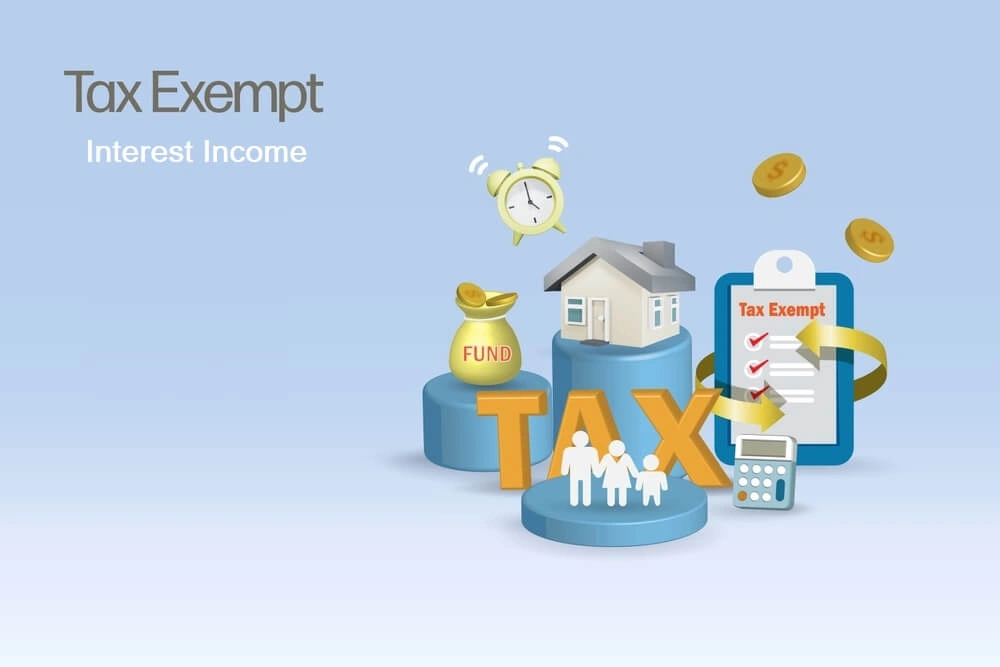Yes, tax-exempt interest income refers to interest earned from specific investments—like municipal bonds—that is not subject to federal income tax and, in some cases, state or local taxes as well.
Investors seeking to retain more of their returns are increasingly drawn to tax-exempt interest income. Whether you’re a high-income earner, a retiree, or someone in a high-tax state, understanding how to generate tax-free income can significantly enhance your financial strategy.

Content
Understanding Tax-Exempt Interest Income
Tax-exempt interest is interest earned from investments that are excluded from federal income taxation. The most common sources include municipal bonds, exempt-interest dividends from certain mutual funds, and some triple tax-exempt bonds. While federal exemption is typical, many instruments may also be exempt from state and local taxes, depending on residency and the issuer.
For example, municipal bonds issued by your state of residence often offer complete exemption from federal, state, and local taxes, qualifying them as triple tax-exempt bonds. This makes them especially attractive for investors in higher tax brackets.
Key Sources of Tax-Exempt Interest Income
Municipal Bonds
The cornerstone of tax-exempt interest income, municipal bonds are debt securities issued by states, cities, and counties to fund public projects. The interest earned is usually free from federal tax and may be exempt from state and local taxes for in-state residents.
There are two primary types:
- General Obligation Bonds: Backed by the issuer’s credit and taxing power.
- Revenue Bonds: Supported by specific revenue sources like tolls or lease fees.
Exempt-Interest Dividends
Some mutual funds invest in tax-exempt securities, particularly municipal bonds, and distribute exempt-interest dividends to shareholders. These dividends retain their tax-free status if the fund meets specific IRS qualifications.
Triple Tax-Exempt Bonds
Issued by municipalities within your own state, these bonds offer exemption from all three tax layers: federal, state, and local. They are ideal for residents in states like California or New York with high tax burdens.
Benefits of Investing in Tax-Free Instruments
The appeal of tax-free investments lies in the after-tax return. A taxable bond with a high nominal yield might offer less value than a tax-exempt bond with a lower yield but no tax liability.
Key Advantages:
- Tax Efficiency: Maximize net returns by avoiding taxation altogether on certain investments.
- Stability: Many tax-exempt securities—like municipal bonds—are considered lower risk.
- Diversification: Balances portfolios by reducing exposure to equity market volatility.
- Ideal for Retirement Planning: Useful for individuals who want stable, predictable income with minimal tax consequences.
Tax Considerations and Pitfalls
While the idea of tax-exempt interest is attractive, it’s crucial to understand the nuances.
Alternative Minimum Tax (AMT)
Some private activity municipal bonds may be subject to AMT, a parallel tax system that recalculates income using different rules. This could affect investors with significant deductions or higher incomes.
State-Specific Tax Rules
Not all tax-exempt interest income is universally exempt. For instance, a municipal bond from another state may still be subject to your state’s tax laws.
Social Security Taxation
Even though your tax-free interest income might not be taxed directly, it can still influence the taxation of your Social Security benefits. This is because the IRS includes tax-exempt interest in the formula used to calculate how much of your benefits are taxable.
How to Evaluate a Tax-Free Investment Using Tax-Equivalent Yield
To assess whether a tax-exempt investment is more beneficial than a taxable one, investors use the tax-equivalent yield.
Tax-Equivalent Yield Formula:
vbnet
CopyEdit
Tax-Equivalent Yield = Tax-Free Yield / (1 – Marginal Tax Rate)
For example, if a municipal bond offers a 3% yield and you’re in a 35% tax bracket:
java
CopyEdit
Tax-Equivalent Yield = 3% / (1 – 0.35) = 4.62%
This means a taxable bond would need to yield over 4.62% to match the municipal bond’s tax-advantaged return.
Many financial websites and brokerages offer tax-equivalent yield calculators to simplify this process.
Strategies to Maximize Tax-Exempt Income
Strategic use of tax-free income investments can significantly improve net returns, especially over the long term.
Bond Laddering
This involves purchasing municipal bonds with varying maturities. As each bond matures, the proceeds can be reinvested, helping manage interest rate risk while maintaining consistent income.
Investing in Mutual Funds or ETFs
For those who want diversification without buying individual bonds, tax-exempt mutual funds or exchange-traded funds (ETFs) offer an efficient solution. They pool money to invest in a variety of tax-exempt securities and distribute exempt-interest dividends regularly.
Targeting Triple Tax-Exempt Instruments
Residents in high-tax states should prioritize triple tax-exempt bonds, which eliminate tax liabilities at all levels.
Ideal Investor Profiles for Tax-Free Investments
While almost anyone can benefit, tax-free investment options are especially advantageous for:
- High-Income Earners: Individuals in the top tax brackets benefit the most due to significant tax savings.
- Retirees: Seeking predictable income streams with minimal tax exposure.
- Residents of High-Tax States: Particularly those living in California, New York, New Jersey, or Illinois.
By integrating tax-exempt interest income into their financial plans, these individuals can preserve more of their earnings while reducing overall tax liability.
Conclusion
Understanding and utilizing tax-exempt interest income can significantly boost your investment efficiency. By focusing on municipal bonds, tax-free bond funds, and other tax-exempt securities, investors can reduce tax liability and increase after-tax returns.
As tax laws evolve and income levels change, regularly revisiting your tax-free investment options ensures you remain aligned with your financial goals. Tools like the tax-equivalent yield calculator and advice from qualified professionals can help guide smart decisions.
Frequently Asked Questions
Is Tax-Exempt Interest Ever Taxable?
While the interest itself may be federally tax-free, it can be subject to:
AMT in some cases
State or local tax if issued out-of-state
Affect on Social Security benefit taxation
How Do I Report Tax-Exempt Interest Income?
On your federal tax return, tax-exempt interest must be reported on Line 2a of IRS Form 1040, even if it’s not taxed.
Are Tax-Free Mutual Funds Safe?
Generally, yes—especially if they invest in investment-grade municipal bonds. However, like all investments, they carry some risk, including interest rate and credit risk.
How Can I Find the Best Tax-Free Investment for Me?
Use tools like a tax-equivalent yield calculator, consult a financial advisor, and evaluate your income level and state tax environment.

Ryan Myers is a business blog author and writer. He graduated from the University of California, Berkeley in 2009 with a degree in Political Science. His favorite topics to write about are blogging for small businesses and becoming an entrepreneur.





